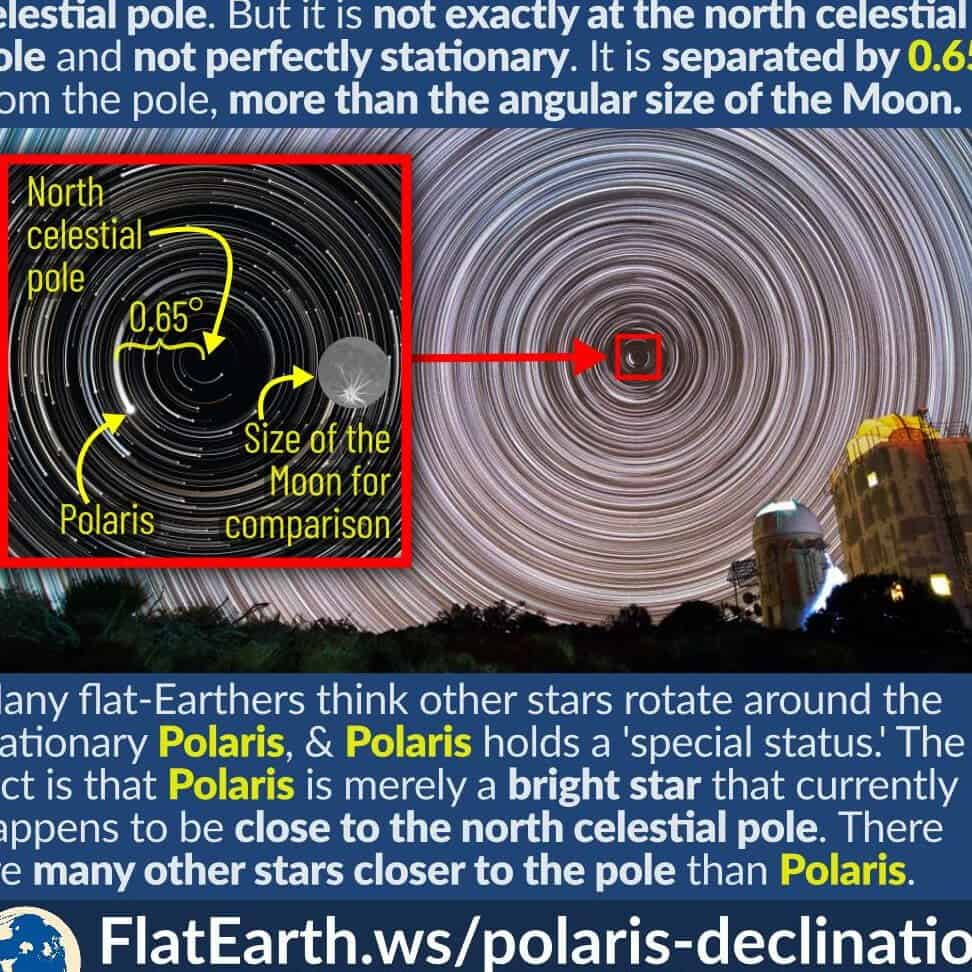
Polaris, also known as the North Star, is the brightest star in the constellation of Ursa Minor. It has earned the nickname “the guiding star” due to its constant position in the northern sky. Polaris is located in close proximity to the North Pole, with the distance between them being less than 1 degree. This close proximity ensures that the position of Polaris remains almost unchanged. It is a valuable tool for navigation, as its direction aligns perfectly with the north and its height above the horizon corresponds to the geographic latitude of the observer’s location.
Does Polaris maintain its position without any changes?
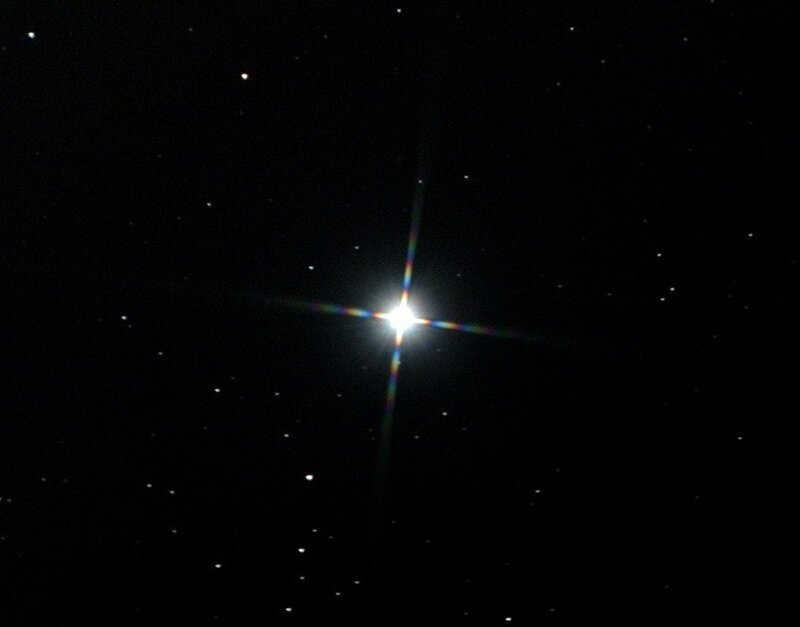
Polaris, also known as the North Star, possesses a unique characteristic that sets it apart from other stars visible to the naked eye. It is situated in closer proximity to the North Pole than any other star, giving the impression that it remains fixed in position throughout the year, unaffected by the changing seasons and time of day. However, in reality, Polaris does experience slight shifts in its location. This is due to an astronomical phenomenon known as annual parallax, which occurs as a result of the observer’s position changing due to Earth’s rotation around the Sun. If one were to fixate on Polaris at a specific moment in time and then revisit its position three months later, they would observe a slight change in the angle.
The Polaris’ future outlook
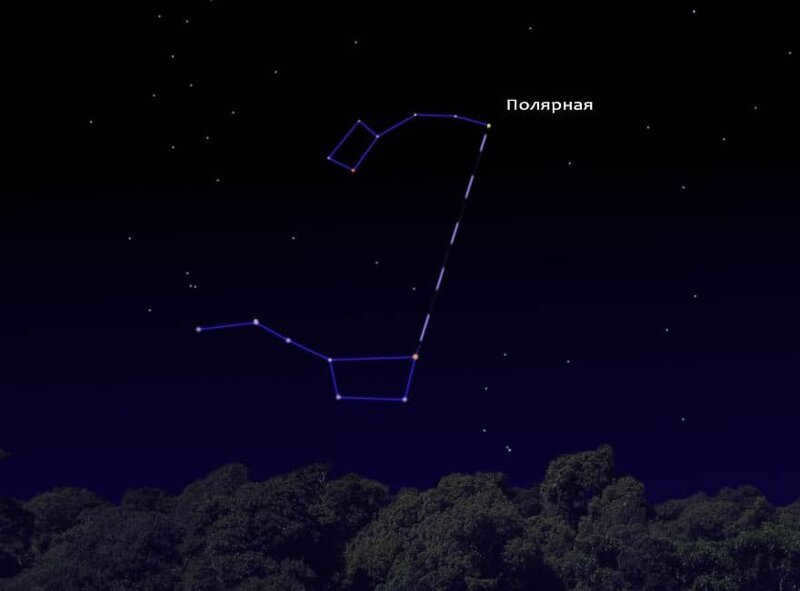
Incidentally, in the distant future, another star will replace Polaris. This is because of the movement of the solar system through space. As the axis of our planet rotates, the star positioned opposite the northern part will slowly, but inevitably, change. If our descendants still rely on Polaris, they will have to find a new star to take its place.
Interesting information about Polaris.
Polaris may not be the most luminescent star, but it holds the distinction of being the brightest star in the Little Bear constellation. This triple star system is situated in close proximity to the North Pole and exhibits minimal movement.

On the blog, occasionally we discuss topics that may not be directly related to meteorology but can still have an impact on our lives. Today, we are once again looking up at the sky. Why? Out of the 6,000 stars visible to the naked eye on a clear, dark night with no light pollution, one star stands out: Polaris or Polaris. It’s not the brightest, largest, or closest star to us, but what sets it apart is that it always remains fixed in the sky, unlike the others.
The significance lies in the fact that while other stars move across the sky, Polaris can always be found by simply looking towards the north. This unique characteristic has made it a crucial reference point for navigators in the northern hemisphere. Let’s delve into the reasons behind why the polar star remains stationary in the sky.
However, this situation will not remain constant, as scientists point out that the Earth’s axis of rotation undergoes a one-degree shift annually, resulting in the eventual disappearance of Polaris from its fixed position in the sky within a few years..
Locating Polaris
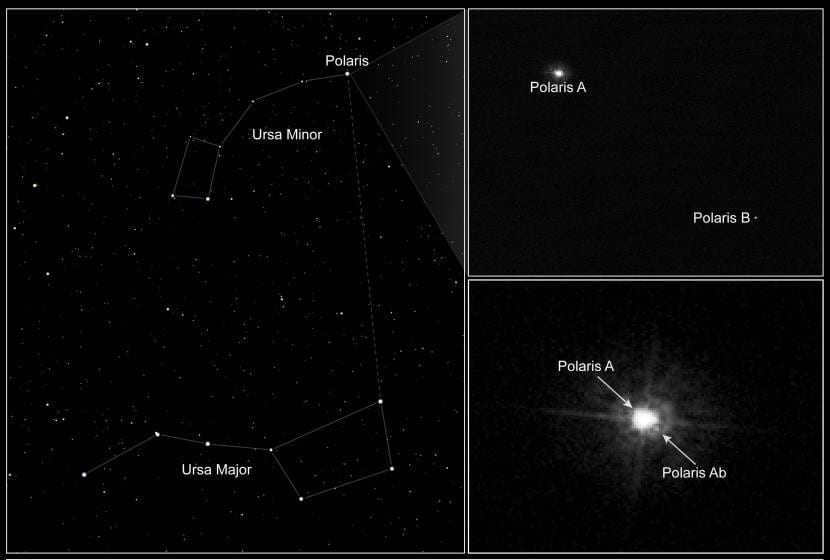
Polaris is a star that can be seen from the northern hemisphere. It remains in a fixed position, making it a valuable tool for navigation and for aligning astronomical telescopes. However, the question remains, how can you easily locate it?
We mentioned earlier that Polaris is located in the constellation Ursa Minor, also known as the Little Bear. To find Polaris, you need to face north and orient yourself in that direction. The stars that make up Ursa Minor are not very bright, so it is essential to avoid areas with light pollution as much as possible.
To locate the Little Dipper, a helpful tip is to first locate the Big Dipper, which can be found approximately halfway between the horizon and the zenith. Depending on your location, you may need to adjust the latitude accordingly. In any case, we have included images in this article to facilitate the process.
The Big Dipper consists of two stars, Dudhe and Merak, that form the “bowl”. These two stars are also known as the Polaris pointers. To find Polaris, imagine drawing a line that is approximately five times the distance between Dudhe and Merak. At the end of this line, you will discover Polaris, the first and brightest star in the Little Bear constellation.

If you’re still curious about the shape of Ursa Minor, try locating the two stars that form the rim of the ladle, namely Ferkad and Kochab. Ferkad makes up the upper part of the ladle while Kochab forms the lower part. These stars are easily visible to the naked eye.
Now it’s just a matter of joining the dots. You’ve already found the three brightest stars in Ursa Minor (Polaris, Perhad, and Kochab), so all that’s left is to identify the remaining stars that complete the shape of the ladle. Look for the two stars that form the handle, with Polaris being the endpoint.
The Big Dipper will be pointing in the opposite direction from the Little Dipper, and, in addition, you will notice that while one appears to be “standing”, the other seems to be “inverted”.
Using a compass to locate Polaris
Another method of locating Polaris is by utilizing a compass. This technique is quicker, but it is important to note that magnetic north and Polaris do not align. Therefore, let’s take the compass and orient ourselves towards the north. Following that, simply look up at the sky and locate the brightest star, which will be Polaris.

Surprisingly, in a few years, specifically by the year 3500, Polaris will relinquish its “position” to a different star called Errai. By the year 6000, something even more extraordinary will occur: you will be faced with the choice between Alphirk or Cepheus. In 7400, it will be Sadr, and in 13600, Vega will take over as the guiding star for future generations. It is worth noting that 14,000 years ago, Vega was already serving as Polaris.
And how about the Southern Hemisphere?
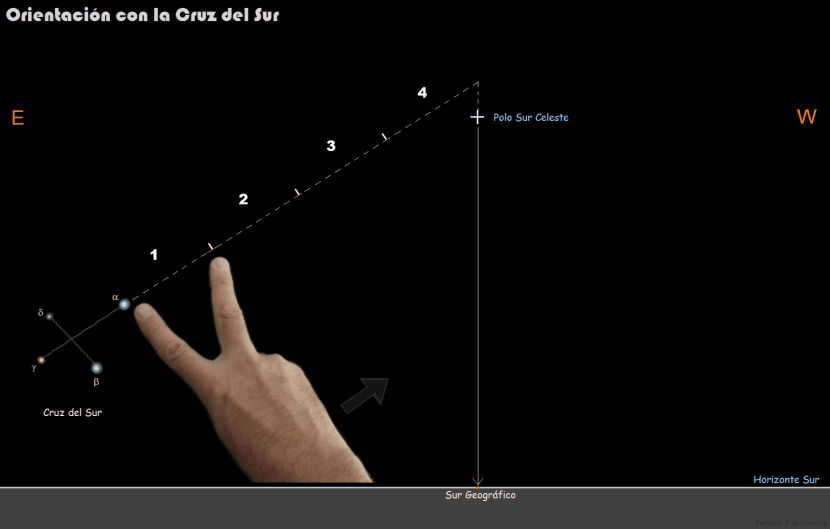
In some parts of the Southern Hemisphere, it is possible to spot Polaris, but it is highly recommended to locate The Southern Cross if you need assistance. To find it, simply face south and look to the left where you will see four very bright stars. Connect the left and right, as well as the top and bottom, to easily identify The Southern Cross.
The information provided in this article adheres to our editorial ethics. If you notice any errors, please click here to report them.
Full article path: Network Meteorology “Meteorology” release “The reason behind Polaris’ stationary position in the sky”
Having knowledge of the way to locate Polaris in the celestial sphere is always beneficial, as it serves as a fundamental skill in navigating through unfamiliar terrain. Once you have successfully located Polaris, you can easily determine the exact direction of north, thereby gaining a sense of orientation towards other parts of the world. In the field of astronomy, Polaris is utilized to calibrate the equatorial mount, as it remains fixed in the sky during the Earth’s daily rotation.
Additionally, Polaris holds considerable fame due to its distinctive position. It is worthwhile to educate your children about this star and assist them in locating it in the night sky. While many children may have heard about Polaris, they often lack knowledge of its precise location, making this information valuable for expanding their understanding.
Ways to locate Polaris in the celestial sphere
The Ursa Minor constellation, also resembling a container like the Big Dipper, is less conspicuous and its stars are not as luminous. As a result, it is always more convenient to locate the Big Dipper first.
Once the Big Dipper is identified, finding Polaris becomes effortless – simply extend an imaginary line that connects the two outermost stars of the Big Dipper and project it further. Polaris will be located approximately five times the length of this line away.


How to locate the North Star in the sky using the constellation Ursa Major.
In close proximity lies another highly prominent constellation, Cassiopeia, which takes the shape of a large letter W. At times, it is this constellation, with its intriguing form, that initially captures one’s attention, and subsequently, it becomes simple to locate Ursa Major.
What Makes Polaris So Well-Known
When you first spot Polaris in the night sky, you might be underwhelmed – it appears no different from the hundreds or even thousands of other stars. Many people, however, believe that it holds a special quality, whether it be a brighter glow or a distinct hue. In reality, Polaris is just an ordinary star with a modest brightness rating of +1.97m, placing it at a modest 50th position on the list of brightest stars.
What truly sets Polaris apart is its unique position near the Earth’s pole – it nearly points directly north, with a deviation of less than 1 degree. This characteristic has made Polaris famous throughout the centuries as a reliable navigational tool for both land and sea travel, aiding explorers in plotting their courses.
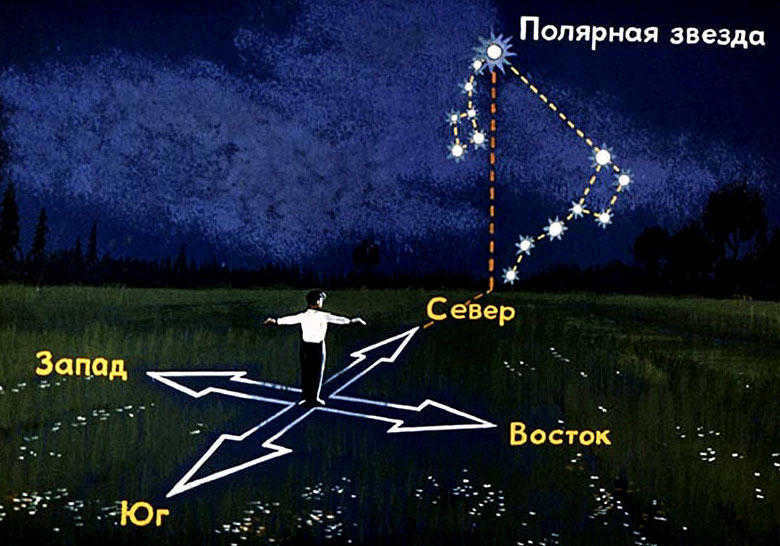
Orienteering using Polaris is not only a means of finding true north, but it can also be used to determine one’s latitude. By measuring the height of the polar star above the horizon, you can ascertain the angle in degrees, which corresponds to the latitude of the observation location. Navigators and explorers have relied on this method for centuries, making Polaris a guiding star that ensures the right path is followed and prevents getting lost.
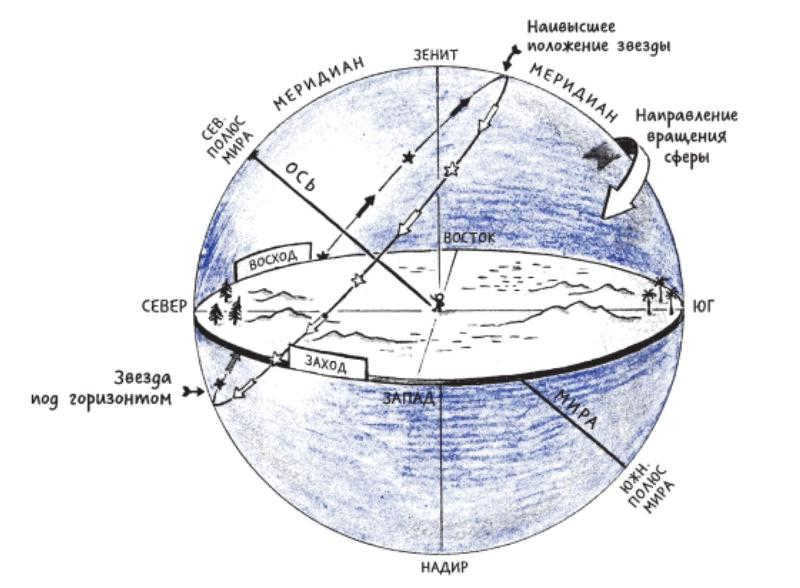
Polaris can be found in the vicinity of the North Pole on our planet.
As the Earth rotates on its axis every day, all the stars appear to complete a full revolution in the sky. However, Polaris remains fixed in its position. This is because it is precisely where the north-south axis intersects, around which the celestial sphere rotates.

One can capture an image similar to this by using slow shutter speeds. Each star creates a trail as it moves across the celestial sphere. However, Polaris, also known as the North Star, remains fixed in the center.
Therefore, despite its lack of visual appeal, Polaris holds a special position and carries significant importance. Interestingly, in the southern hemisphere, there is no bright star close to the South Pole. This means that inhabitants of the northern hemisphere are fortunate to have a reliable point of reference in the night sky.
Will Polaris Always Remain the North Star?
Over time, the Earth’s polar axis undergoes precession, a circular movement with a radius of 23 degrees and a shift of 1.397 degrees every 100 years. As a result, different stars periodically appear in the direction of the North Pole. Currently, Polaris is the closest star to the pole, but this will not always be the case.
Even now, Polaris is not exactly at the pole – there is a small deviation of less than a degree. By 2102, this deviation will be reduced to only 27 angular minutes, making it the closest position of Polaris to the pole. After that, Polaris will gradually start moving away from the pole.
Illustration of the Earth’s axis precession from Wikipedia.
5,000 years in the past, Draco’s Alpha Tuban served as the polar star. In the distant future, 12,000 years from now, Vega, one of the most brilliant stars in the sky, will take its place as the polar star.
The Nature of Polaris
Now that you have learned how to locate Polaris in the celestial sphere, you may be curious about the significance of this seemingly ordinary yet highly valuable star. In reality, it is a captivating and extraordinary celestial body. If you were able to journey to Polaris, you would be astounded by the captivating phenomena occurring within the Polaris system.
Polaris is a unique triple system. The primary constituent is an immense supergiant that outshines the Sun by 2000 times and possesses about 6.5 times the Sun’s mass. Notably, it is also 50 times larger than the Sun! This extraordinary star, known as Polaris A, is relatively young, having formed just 55-65 million years ago.
Additionally, located at a considerable distance of 2400 astronomical units from the primary star, there exists another star named Polaris B. Polaris B is 1.39 times more massive than the Sun and takes roughly 100,000 years to complete a single orbit around the primary star. Interestingly, amateur astronomers can observe Polaris B using a telescope.
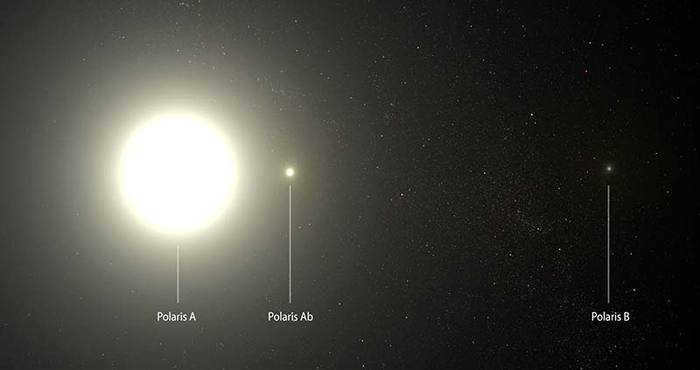
However, that’s not the only interesting thing about Polaris. The main component of Polaris is a supergiant star that belongs to a special group of variable stars known as cepheids, which means it pulsates. What sets Polaris apart from other cepheids is that its pulsations sometimes subside and then resume. Over the span of several decades, it becomes brighter and fainter. Additionally, Polaris is the closest cepheid star to us.
Therefore, Polaris is a highly unusual star. It is a system consisting of three physically connected stars, each larger than the Sun, with one of them being a pulsating supergiant.
Now you not only know how to locate Polaris in the night sky but also have an understanding of what it is. Make sure to find it and remember all the fascinating information you’ve learned about this peculiar celestial object. Don’t forget to share it with your children as well.
Without a doubt, Polaris is widely recognized as one of the most renowned and beloved celestial entities. It is highly unlikely to come across an individual who is unfamiliar with its name.
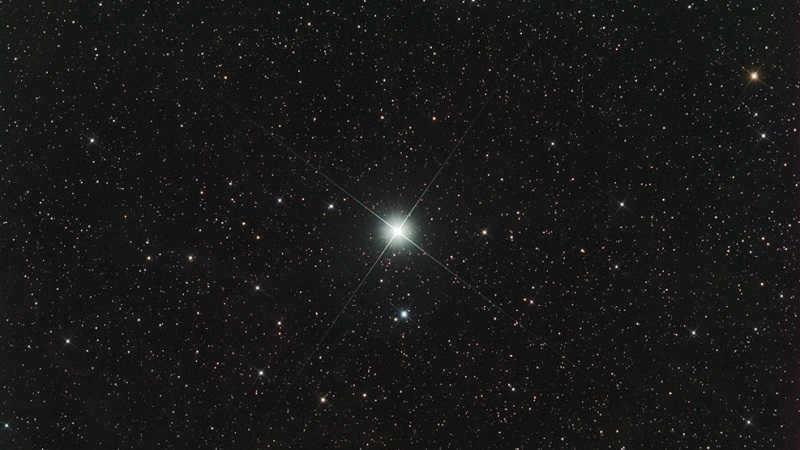
At present, the object Alpha of the Little Bear constellation has taken its position.
Scientists state that Polaris is classified as a Cepheid variable star of the delta Cepheus type.
Remarkably, it exhibits pulsations that decrease over a span of several decades. To illustrate, its brightness fluctuations decreased from 8% to 2% between 1900 and 2005. However, overall, it has become significantly brighter during this timeframe.
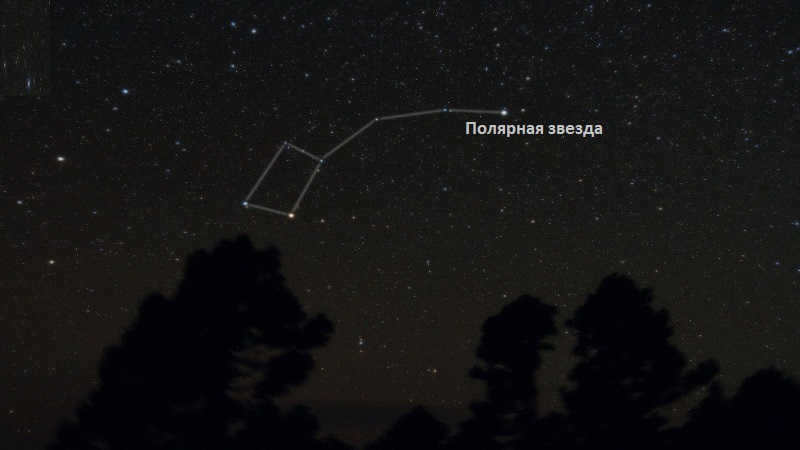

The Ursa Minor constellation
It is worth mentioning that this particular constellation is the most brilliant and nearest among its kind to our planet. Its apparent stellar magnitude is +2.0m. Additionally, its current distance from Earth is about 447 light years or 137 parsecs.
It is worth noting that Alpha Minor is the nearest Cepheid, which plays a significant role in determining astronomical distances.
Cepheids are a type of pulsating variable luminaries that have a period-luminosity relationship.
Actually, the name itself reflects its position on the map of the starry sky.
In truth, there are many different names for this famous celestial object.
For instance, in ancient Greece, it was known as Kinosura, which translates to “the tail of a dog.” And here in England, it is referred to as the pole luminary: a celestial body deserving of attention and admiration.
It is often referred to as the Guiding Star or the North Star, once again due to its position and significance.
Polaris serves as a beacon in our sky.

Overview of Polaris
To begin with, the Alpha of the Little Bear is not just a regular star, but a whole star system that consists of three parts.
At the center of this system is a supergiant star known as Polaris A (α UMi A), which has been found to have a companion star named Polaris P (α UMi P). These two stars form a close binary system. It is worth mentioning that the main component, Polaris A, is one of the brightest stars because it belongs to the supergiant category.
Lastly, there is a third component called Polaris B, which is located at a considerable distance from the central object.
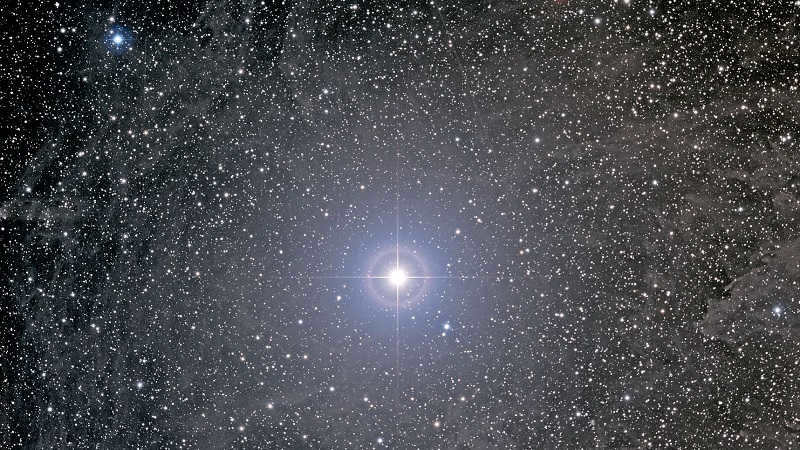
When discussing the attributes of Polaris, it is crucial to grasp its physical properties. Remarkably, it shines more brightly than our Sun and also possesses a greater magnitude ( Polaris from Hubble
Due to the phenomenon of luni-solar precession, which involves the changing direction of the axis of rotation of a celestial body, the Earth’s axis undergoes a circular movement. This results in different celestial objects being in close proximity to the World Pole at different times. Since Polaris is a designated proper name, it can be replaced by other objects depending on the time.
For instance, at a certain time, the following celestial objects were located above the northern point of the horizon: Vega – α Lyra; π , η, and τ of Hercules; ι and α Dragon; β of the Little Bear.
Now begins the reign, so to speak. The Little Bear takes center stage. Astronomers predict that this reign will last until the year 3200. After that, the northern position will be handed over to Alrai γ, Alphirk β, and Alderamin – α Cepheus, as well as Deneb α and Sadr – γ of Swan. Eventually, the seat will return to Vega – α Lyra.
By the way, this phenomenon is known as the precessional circle, where the position of the stars relative to the celestial equator undergoes change.
Have you ever wondered about the altitude of Polaris? Its height above the horizon corresponds to the geographic latitude of the observer’s location. In essence, its direction aligns almost perfectly with true north.
In the Northern Hemisphere, the North Star is situated above the northern point of the horizon, making it useful in orienteering and determining geographic latitude.
Many individuals often wonder which star is brighter: Sirius or Polaris. To clarify, Sirius is the brightest star in the sky, while Polaris holds the title for the brightest among the celestial bodies in the Northern Hemisphere.
The next question that arises is: how much brighter is Sirius compared to Polaris? The answer is 27 times brighter! However, it is important to note that Polaris is located 53 times farther away. Consequently, its actual level of luminosity is 300 times greater than Sirius.
Where can you find Polaris in the sky?
Polaris, also known as the North Star, is located near the North Pole of the Earth. More specifically, it can be found in the constellation of Ursa Minor, also known as the Little Bear.
According to scientific observations, Polaris is currently less than 1 degree away from the North Pole. This means that it appears almost motionless in the daily rotation of the celestial sphere. As a result, at the North Pole, Polaris remains stationary and can be observed directly overhead, at the zenith.
To locate the North Star, you need to locate the Big Bucket asterism within the Big Dipper constellation. As you may know, the Big Bucket is formed by seven bright stars that outline a pot with a handle. By drawing an imaginary line through the walls of this ladle (Dubhe and Merak), you can determine the direction of the handle. Next, you need to measure a distance five times the length between the ladle walls and move in that direction. At the end of this line, you will find the Alpha star of the Little Bear constellation.
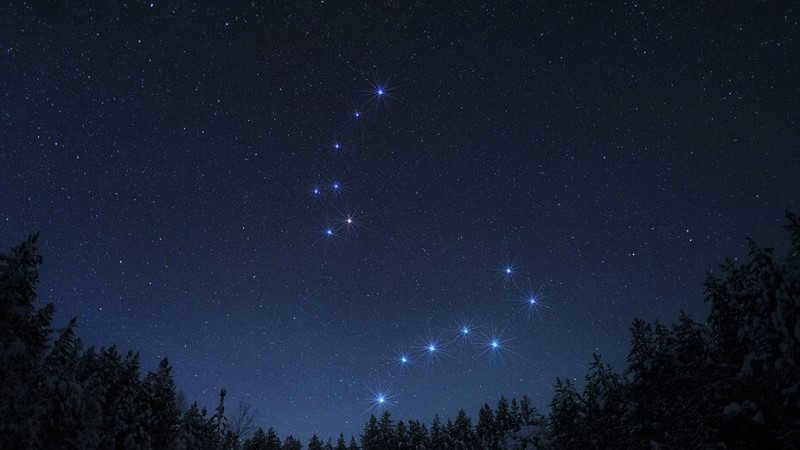
The constellations of the Big and Little Medeveditsa.
What is the Southern Polaris
In the southern hemisphere, it is not possible to observe the Northern luminary. Therefore, it is impossible to orient oneself by it, as there is no shadow from Polaris.
In reality, there is no stellar body located at the South Pole axis. The closest one is Sigma Octanta. However, it cannot be used as a guide. In some cases, people refer to the constellation Southern Cross, as it at least points towards the South Pole. It can be considered as a sort of reference point.
How to locate Polaris?
Polaris remains fixed in the sky
Polaris is the most luminous star in the Little Bear constellation.
There is a common misconception that Polaris is an exceptionally bright star. Many individuals who are not well-versed in astronomy believe that Polaris is highly luminous, if not the most luminous star in the night sky.
However, Polaris is merely the brightest star in the Little Bear constellation. With an apparent magnitude of +1.97, Polaris is classified as a second magnitude star, of which there are numerous in the celestial sphere. The notion that Polaris is nearly the brightest star in the Northern Hemisphere stems from its unique position. This star is situated near the North Pole, which grants it significant importance for navigation purposes.
Orientation on the terrain using Polaris
Polaris in the field of astronomy
Polaris (also known as Alpha of the Little Bear (α UMi) or Kinosura) is a star with a sidereal magnitude of +2.0, located in the constellation of the Little Bear near the North Pole of the Earth. It belongs to the spectral class F7Ib and is classified as a supergiant. Its distance from Earth is approximately 434 light-years.
In 1990, the Hipparcos space telescope, operated by Europe, determined that the distance to Polaris is about 434 light-years. However, in 2012, a group of astronomers led by David Turner from St. Mary’s University in Canada used data from Russia’s six-meter BTA telescope to make high-resolution measurements. Their findings suggest that the distance to Polaris is actually 99 parsecs (approximately 323 light-years).
The distance to Polaris, a type of Cepheid variable star, is utilized for estimating distances to other galaxies. By refining this distance, it is possible to improve the accuracy of the distance scale and also constrain the mass of dark matter.
Multiple designations for Polaris
Polaris, also known as Alpha Ursae Minoris (α UMi) or Kinosura, is a star with a magnitude of +2.0 in the constellation Ursa Minor, situated close to the North Pole of the Earth. It is a supergiant star classified as F7Ib. The current estimate for its distance to Earth is 323 light-years, although it was previously believed to be 434 light-years until 2012.
Description
The text needs to be paraphrased while maintaining its uniqueness, using the English language and preserving the HTML markup:
Description
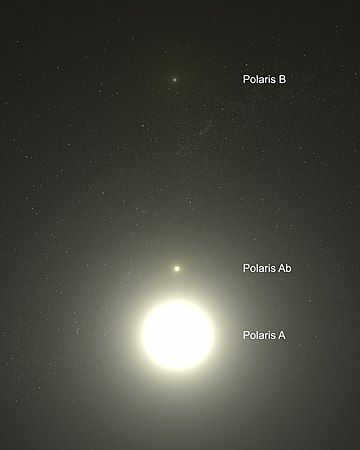
In the current era, Polaris is positioned less than 1° away from the North Pole of the Earth, making it nearly stationary in the daily rotation of the celestial sky. Its presence serves as a convenient point of reference for navigation, as the direction towards Polaris closely aligns with the northern direction, and its height above the horizon corresponds to the geographic latitude of the observer’s location. Due to the precession of the Earth’s axis, the position of the North Pole of the Earth gradually shifts, and by around 2100, Polaris will be at its closest proximity to it, approximately 30' away. It is worth noting that there is no prominent star equivalent to Polaris in the southern hemisphere.
In 1990, the European spacecraft Hipparcos made a calculation and determined that the distance to Polaris is about 434 light-years. However, in 2006, another estimate of 330 light-years was presented by Turner, and in 2008, Usenko and Klochkova suggested a distance of 359 light-years [5]. A more recent and high-resolution measurement was conducted in 2012 by a team of astronomers led by David Turner from St. Mary’s University in Canada. They used data from the Russian six-meter BTA telescope and determined that the distance to Polaris is approximately 99 parsecs or 323 light-years [6].
Knowing the distance to Polaris is crucial as it is a typical cephid and can be used to estimate the distances to other galaxies. By refining this distance, we can improve our understanding of the distance scale and gain insights into the mass of dark matter [7].
Background
Due to the phenomenon of luni-solar precession, the Earth’s axis undergoes a circular movement with a radius of 23 degrees, changing its position by approximately 0.5 degrees every 100 years. Consequently, the stars closest to the North Pole vary over time. For instance, during the pre-dynastic period of ancient Egypt around 5000 years ago, the star closest to the North Pole was alpha Dragon. However, during the beginning of our era, there were no prominent stars near the North Pole at all. In 2000 years, the star gamma Cepheus will be the closest to the North Pole, and in 12,000 years, it will be Vega (alpha Lyra).
Below is a list of the polar stars that make up the complete precession circle [8].
Polaris: The Ultimate Guide to Orienting Yourself in the Wilderness
Polaris, located above the northern point of the horizon in the Northern Hemisphere, serves as a reliable tool for navigating through terrains.
Being positioned directly above the North Pole, Polaris is only slightly off the Earth’s axis, making its movement across the sky nearly undetectable.
This creates an illusion of it perpetually hovering over the Earth, unaffected by the Earth’s rotation.
This remains true if we disregard the Earth’s axis precession, which involves oscillations in the Earth’s rotation axis. Currently, the celestial sphere’s north pole is in close proximity to Polaris, but in a few thousand years, it will gradually shift towards the constellation Cepheus.
The arrangement of stars in the sky, known as constellations, appears to be equidistant from any point on the Earth’s surface. This creates the illusion that all celestial bodies are located on the inner surface of a spherical object, commonly referred to as the firmament or simply the sky.
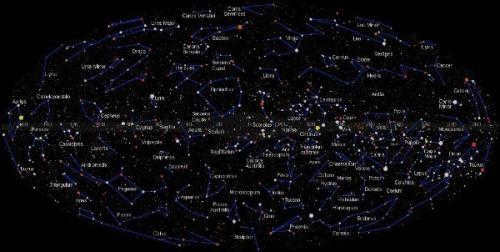
During daylight hours, the sky appears blue unless it is obscured by clouds. The sun, the most prominent celestial body, can be seen against this backdrop. Occasionally, other celestial bodies like the moon or the planet Venus can also be observed in the daytime, albeit rarely.
On a clear night, when the sky is without clouds, we can observe various celestial objects such as stars, the moon, planets, nebulae, and occasionally comets. The initial impression of the night sky is that there are an infinite number of stars scattered in a disorderly fashion. However, this is not the case. To the naked eye, we can only see around 6 thousand stars in the entire sky, and only about 3 thousand at any given moment from any location on Earth.
The arrangement of stars in the sky changes at an incredibly slow pace. Without precise measurements, it is impossible to notice any significant changes in the positions of stars over hundreds, and even thousands of years. This consistency allows us to easily navigate among the thousands of stars, despite their seemingly haphazard arrangement.
Constellations, which have long been used for orientation in the sky, have traditionally been organized by grouping together bright stars. These constellations are typically named after various animals (such as the Big Bear, lion, and dragon), heroes from Greek mythology (like Cassiopeia, Andromeda, and Perseus), or objects that resemble the figures formed by the group’s stars (such as the northern crown, triangle, arrow, and scales).
Using the night sky map and familiarizing oneself with the distinctive patterns created by the brightest stars in constellations is essential for locating fainter stars or other celestial objects. By becoming skilled at quickly identifying specific constellations in the sky, one can navigate through the vast expanse of stars. Memorizing the unique outlines formed by the brightest stars within constellations is an important step in this process.
Methods for Identifying the Position of Polaris in the Night Sky. Unique Characteristics of Polaris and Popular Misconceptions
Prior to embarking on a search for Polaris, it is essential to familiarize oneself with its distinctive attributes. This will not only facilitate a more efficient locating process amidst the vast expanse of the night sky, devoid of any star labels or constellation boundaries, but also aid in dispelling common errors. There exist several prevalent misconceptions regarding Polaris, with the following being the most frequently confused:
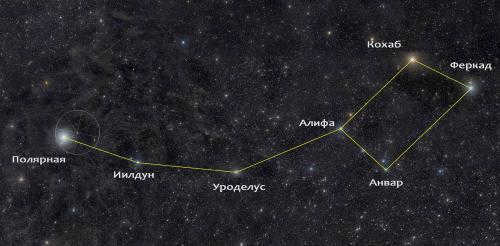

The stars of the Ursa Minor constellation, to which Polaris belongs
Fascinating fact: Polaris actually aids in determining the north more precisely than a compass. We already know that it is exactly positioned above the Earth’s North Pole. However, the compass points to the Earth’s northern magnetic pole, which is slightly offset from the geographic pole and shifts a few kilometers each year. Therefore, when closer to the north, Polaris becomes the most accurate tool for determining coordinates.
Surrounding Polaris are numerous stars that shine much brighter
However, this situation is not permanent. The Earth’s axis is in a constant state of movement, gradually shifting in a circular pattern. This movement is happening at an incredibly rapid pace, at least when considering cosmic timescales. In fact, a complete revolution of the Earth’s axis takes approximately 25,800 years. As a result of this continual movement, Polaris, the current North Star, has not always held the position of prominence, and it will not hold this position indefinitely. In approximately 13,000 years, the bright star Vega will assume the role of the North Star, making it easier for future Earthlings to locate the northern celestial pole.
Polaris, also known as the North Star, is the most luminous star in the Little Bear constellation. The Little Bear constellation is relatively modest in size and its most notable feature is the Little Dipper asterism, which is composed of seven stars.
These two stars, Polaris and its companion star, are commonly referred to as the Guardians of the Pole.
What causes the lack of movement in Polaris? The Relationship between Polaris and the Earth’s Rotation
The stationary nature of Polaris. Polaris in the field of astronomy
Understanding constellations. Defining constellations and their abundance in the night sky


Astronomers divide the starry sky into constellations, which are areas on a map. In ancient times, constellations were known as patterns made up of groups of stars. These patterns helped people navigate and find their way in the night sky. The concept of constellations dates back to the second century BC and has been used to create the first star maps.
The International Astronomical Union, a organization dedicated to the study of astronomy and astronautics, was founded in Brussels in July 1919. Through its efforts in 1928, the precise boundaries of 88 stellar sectors were established and formally acknowledged, providing a significant aid to cartographers, sailors, astronomers, and fostering better communication among scientists.
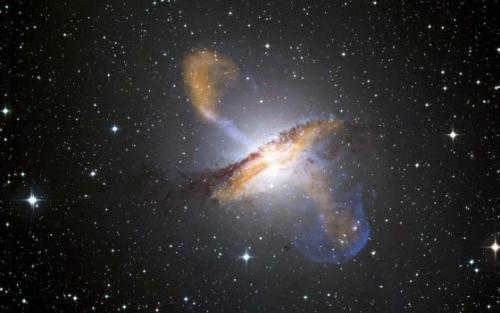
A unique position on the celestial chart is occupied by the zodiac circle, which consists of 13 constellations – Aries, Taurus, Gemini, Cancer, Leo, Virgo, Libra, Scorpio, Sagittarius, Capricorn, Aquarius, Pisces, and Serpentor.
The latter is not officially recognized as part of the zodiac, but it is indeed located on the annual path of the Sun, Earth, and Moon. These constellations are familiar to us from trendy astrological predictions and charts created by contemporary astrologers.
In Babylon, 200 years ago, the 12-sector zodiac was already in use and zodiacal horoscopes were widely employed.
The official boundaries of each zodiac constellation were established in 1928 during the process of delineating the entire star map.
What is the total number of constellations in the sky?
How were the star groups named?
The constellations obtained their names from cultural traditions, mythology, and the shapes of objects. Many of the names were passed down to us from ancient Rome, who themselves borrowed them from the ancient Greeks, who were known to borrow from the ancient Babylonians.
The Babylonian astronomers-astrologers assigned names of mythical heroes, rulers, and animals to groups of stars. The ancient Greek scientists then adopted this system, replacing the Babylonian heroes with their own.
Ancient Rome contributed to the celestial sphere by adding their own achievements, remarkable personalities, and mythical creatures. This resulted in the creation of constellations such as Andromeda, Hercules, Hydra, Cassiopeia, Pegasus, Centaurus, and many more.
During the era of geographical explorations, the sky was adorned with magnificent celestial creatures such as the Peacock, the Indian, and the Bird of Paradise.
In more recent times, constellations have been given more straightforward names, often related to animals or instruments. Examples include the Toucan, the Microscope, and the Compass.
What are the distinguishing features of the Little Bear and the Southern Cross constellations?

Each constellation is only visible in one hemisphere: the Big Dipper is visible in the northern hemisphere, while the Southern Cross is visible in the southern hemisphere. They are easily distinguishable and remain virtually motionless.
These characteristics were extremely valuable for ancient and medieval sailors, as the constellations reliably indicated their direction: the group of stars in the Southern Cross pointed to the south, while the North Star in the Big Dipper pointed to the north.
The axis mundi is often manifested as a celestial tree that serves as a link between the realms of the underworld, humanity, and the divine. A prime example of this concept can be found in Norse mythology with the legendary Yggdrasil, an ash tree that supports the celestial heavens. Each day, the gods convene beneath its branches for their council. Yggdrasil’s roots extend into three distinct worlds: the realm of humans known as Midgard, the domain of the giants known as Jotunheim, and the realm of the deceased known as Helheim. At the base of the tree, three springs (originally believed to be interconnected) flow, representing the sources of destiny, wisdom, and all earthly rivers.
The celestial or cosmic column can also be seen as the world’s axis. This mythological concept can be found in Delaware and in pre-Christian Romanian mythology. The Milky Way is often depicted as a cosmic column that supports the heavens and connects them to the earth.
Other representations of the axis mundi include cities, especially capitals, palaces, and temples (such as the ziggurat), vines hanging from the sky, and sacred staircases (like the seven-step staircase described by Origen).
None of the depictions of the world axis are static. They are all places of active transition, where there is dynamic union and beings of different natures (gods and humans) meet or even merge. Thus, the axis mundi symbolizes the unity of opposites. Because the axis mundi serves as a crossroads between different levels of the world, it is held in higher esteem than other sacred places.
There is a belief among certain researchers that the concept of the axis mundi continues to exist in a secularized society. They argue that structures like the Washington Monument in the United States or the Eiffel Tower in France serve as representations of the axis mundi, but instead of symbolizing the connection between mythological realms, they symbolize power. However, the application of the axis mundi concept in a secular society is a topic of debate.
Video: Polaris’ Location
What is the constellation our Earth is situated in?
To sum up, it can be stated that the Earth, along with the Sun, is part of the Milky Way galaxy, although it is not positioned at the center but rather on the outskirts. It does not reside within any specific constellation, as constellations were created by humans to organize the stars visible from our planet.
What is the color of Polaris?
The color of Polaris is yellowish. When observed through binoculars, it is clearly visible that Polaris has a yellowish hue. The reason why Polaris is often considered one of the brightest stars in the Northern Hemisphere is because of its unique position in the sky.
Which star indicates the north direction?
Polaris (Alpha Minor (α UMi), also referred to as Kinosura) is a +2.0m celestial body situated in the Little Bear constellation, in close proximity to the Earth’s North Pole.
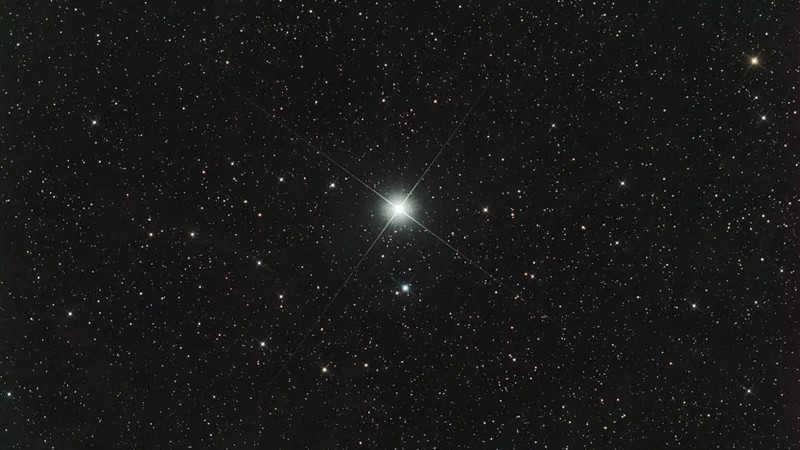
Among humans, the Sun is undeniably the most popular celestial body. Its fame dates back to ancient times, when it was not even recognized as a star. However, its rise to stardom, so to speak, happened relatively recently in historical terms and was rather short-lived.
While some may believe that the Sun possesses extraordinary brightness, it is actually quite average in this regard. Similarly, it is often thought to be the nearest star, but this is not accurate. There is a misconception that Polaris can be seen from any location on Earth and used to navigate across all the world’s oceans and deserts. However, this belief is also incorrect. Only those well-versed in astronomy truly understand the significance of this celestial body.
What makes Polaris so renowned?
First and foremost, it is its location on the celestial sphere, which is relatively close to the North Pole of the Earth – the point on the celestial sphere where the Earth’s imaginary axis of rotation intersects with the imaginary sphere. Polaris is approximately aligned with this point.
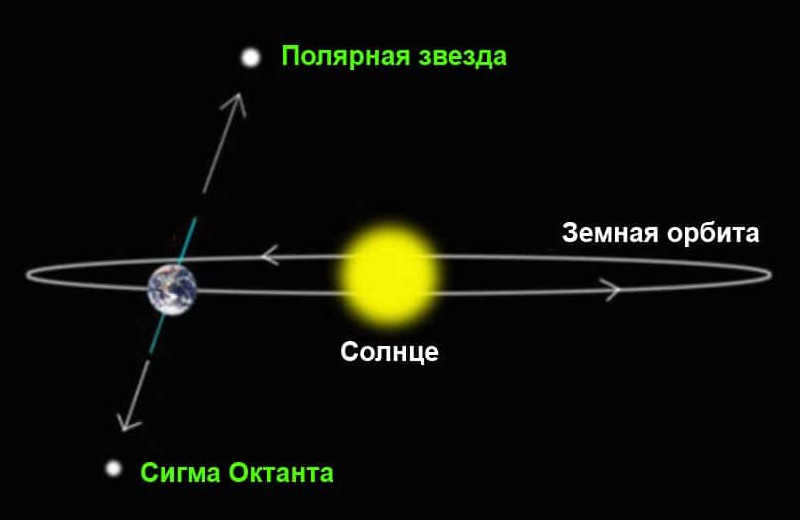
Doesn’t it seem like a lot of abstraction that requires a lot of imagination?
However, it’s actually quite simple. If you extend the line connecting the poles of the Earth globe – north and south – in the northern direction, that line will accurately point to Polaris.
By observing this celestial body from any location in the northern hemisphere of the Earth, we will always be able to determine the direction of the Earth’s axis of rotation.

Unfortunately, the southern hemisphere of the planet does not have the privilege of seeing Polaris. It remains hidden from view, regardless of the season. This limitation significantly restricts its usefulness in maritime navigation.
However, it was precisely its navigational significance that propelled Polaris to fame. The art of seafaring originated in the northern hemisphere, where this star was easily recognizable in the night sky. Ship captains and navigators relied on Polaris to determine their northward direction by aligning a plumb line with it. This enabled them to navigate the open sea in all directions (east, south, west), where other landmarks were absent. Only the stars could guide their way.
Only Polaris consistently shines above the northern point
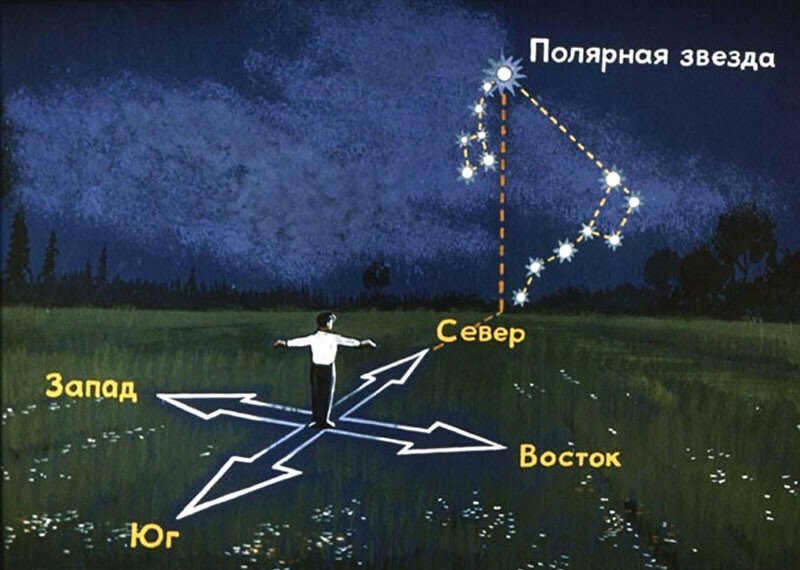
If you are standing at the North Pole, Polaris will be directly overhead, at the zenith. As you move further south, Polaris will appear closer to the horizon. At the equator, Polaris will be visible right at the mathematical horizon line. Due to the Earth’s atmosphere and curvature, it can be seen just above the horizon in open areas like deserts, steppes, or seas. However, if we consider an accuracy of ±1°, the angle between Polaris and the horizon can be used to determine our latitude. This is particularly useful for marine navigation. By measuring the altitude of Polaris with a marine sextant at night, you can easily determine the latitude of your ship’s location.
Using special tables and corrections for refraction, you can improve the accuracy of determining the latitude of the observation point by Polaris. Instead of rounding it to the nearest degree, you can now determine it to the nearest one or two angular minutes, which corresponds to a distance of a few kilometers. This level of accuracy is sufficient for locating even a very small island.
Unfortunately, Polaris cannot assist us in determining longitude. There are other methods available for this purpose. However, this article does not focus on marine navigation.
Why did this star appear in such close proximity to the North Pole of the Earth on the celestial sphere? How long has it been in that position?
It’s mostly a matter of chance and coincidence. For instance, there is no star of similar brightness near the South Pole of the Earth. Navigating through the oceans and seas in the southern hemisphere was a bit more challenging before the advent of GPS.
Even in the northern hemisphere, a couple of thousand years ago, ships weren’t guided by Polaris. It didn’t even have that name at that time.

The name Polar Alpha of the Little Bear is a relatively recent one. It wasn’t until the Renaissance that it started being called that, thanks to the Dutch cartographer Gemma Friesus. In 1547, he described it in one of his works as “stella illa quae polaris dicitur” and the name stuck. Back then, though, it was four times farther from the pole than it is now.
Prior to that, different peoples had different names for the alpha of the Little Bear. The Greeks called it “Kinosura,” which means “dog’s tail.” They didn’t see a bear around it at all, but rather a dog. This dog was the very one that followed its mistress, the nymph Callisto, to the sky. Callisto had been turned into a bear by the jealous Hera, but Zeus saved her and brought her to heaven.
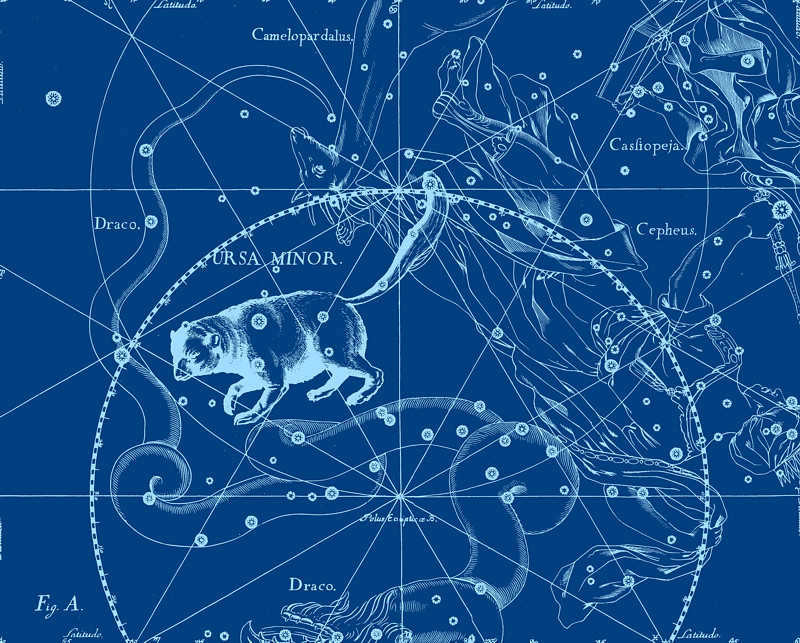
The ancient Celts referred to it as the “Ship-Star” – “Scip-steorra” – a name that foreshadowed the future significance of this celestial body.
Meanwhile, the ancient Arabs, who bestowed names upon nearly all visible stars in the sky, named Polaris “Al-Judei”, which simply translates to “Father”. Many Arabic star names continue to be used in astronomy today. However, the ancient name of Polaris has been largely forgotten.
Regardless, in ancient times when all of these astronyms for Polaris were established, this guiding light was not used for navigation, orienteering, or any similar purposes. It was still distant from the pole.
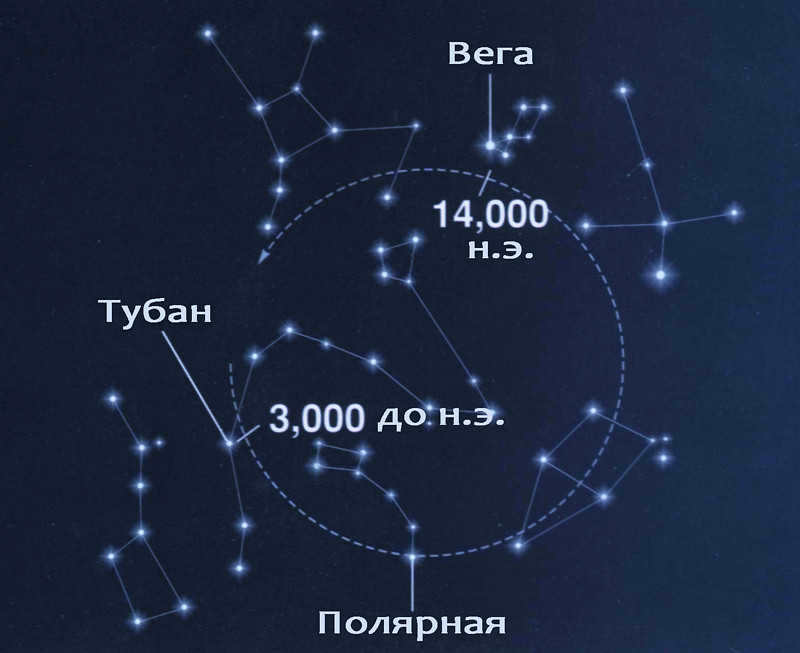
Undoubtedly, there was no Dragon featured on ancient star charts
As we now comprehend, the North Pole of our planet gradually shifts across the celestial sphere, journeying from one star to another and completing a full rotation every 26,000 years. Currently, it is nearing its closest point to Polaris, which will occur in 2102 – exactly 80 years from the present. During this time, the minimum distance between Polaris and the North Pole of our planet will be 27 arc minutes, slightly smaller than the size of the moon. At present, this distance is almost one degree.
In the future, Polaris will no longer retain its status as the “polar” star and will be replaced by the stars of the Cepheus constellation in around two thousand years. And approximately 10,000 years after that, the dazzling beauty of Vega – the alpha star of the Lyra constellation – will become the new “polar” star for the inhabitants of the northern hemisphere of Earth.
What other intriguing information can be shared about Polaris?
Polaris, as previously stated, serves as the leader of a petite constellation known as the Little Bear, where it proudly holds the title of the alpha and the most luminous star. In all fairness, the beta of the Little Bear, commonly referred to as Kohab, is only marginally dimmer than Polaris, with a difference in star magnitude that is minuscule and indistinguishable to the naked eye.
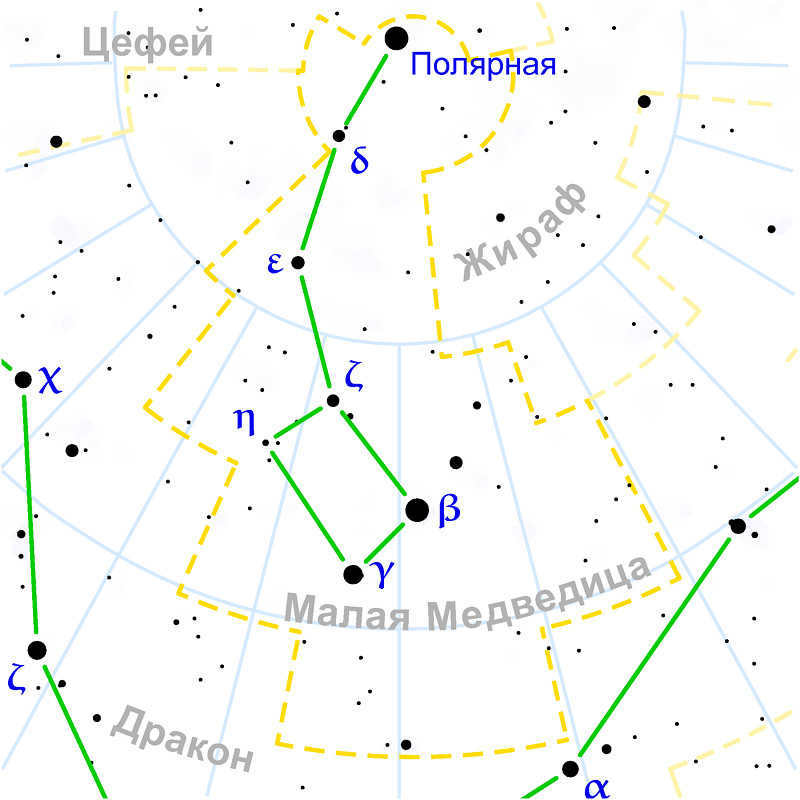
In terms of brightness, Polaris can be compared to the stars in the handle of the Big Dipper constellation, where it is commonly located. By extending the line connecting the two outermost stars of the Big Dipper five times, we can spot Polaris, a relatively dim star with a magnitude of only 2nd.
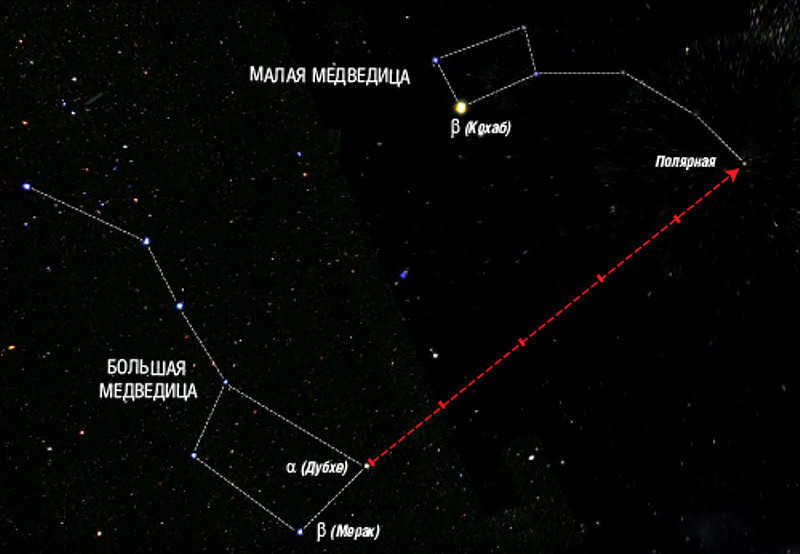
While it may not catch the eye of the average person, the Polar Star holds a special place in the sky. Astronomers have discovered various distinct characteristics and exceptional properties associated with this particular star.
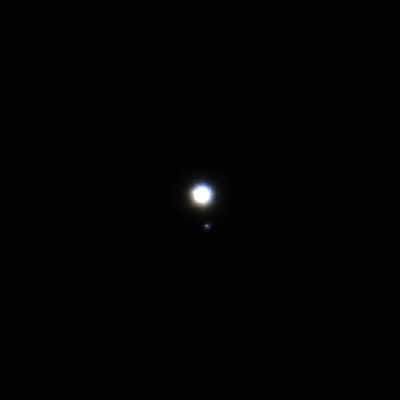
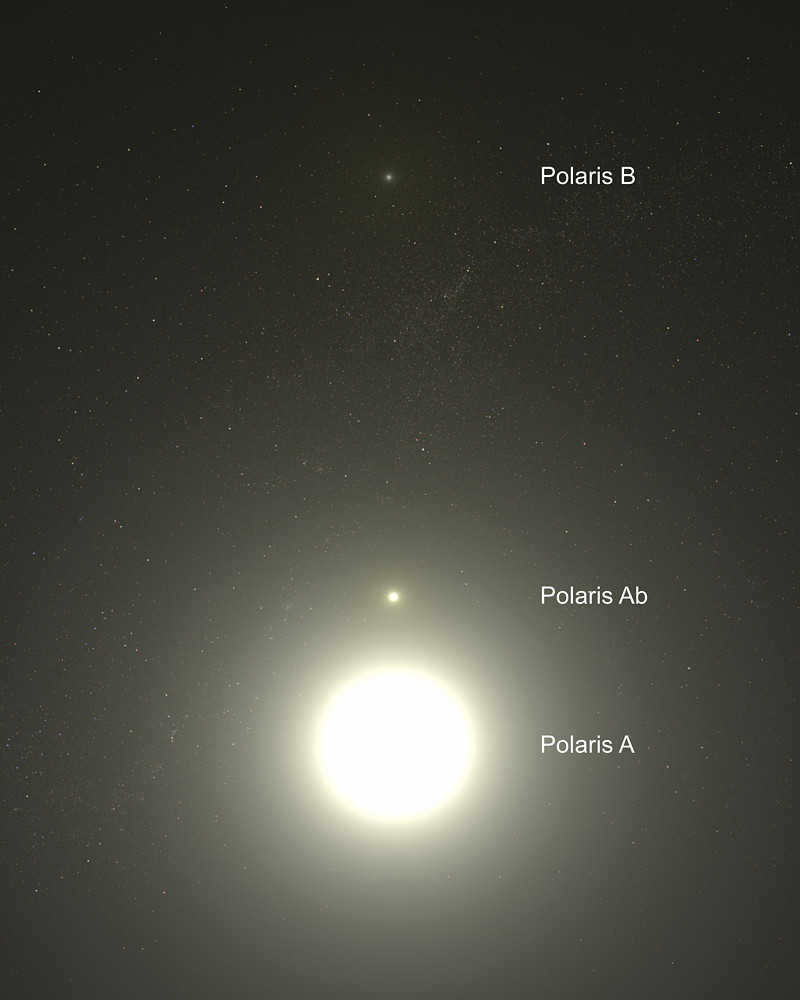
Astronomers have discovered several stars with constant luminosity around Polaris, known as the North Polar Series. These stars have become the standard for measuring the brightness of other stars, as their consistent position above the horizon ensures that the degree of atmospheric absorption remains the same under clear and transparent skies. This stability makes them reliable references for measuring the light of other stars.
At one point, Polaris itself was part of this group and served as a prime example of a stable star.
It is now known that the brightness of Polaris changes in the same way as most Cepheids, which are variable stars like Cepheus delta. However, Polaris has a unique feature that sets it apart from other cepheids. Firstly, the amplitude of Polaris’ brightness change is very small, only a few hundredths of a star magnitude. This is why it was considered stable in the past when accurate photometers were not available. Additionally, over the course of its study, the amplitude of Polaris’ brightness change has decreased by four times, while the overall brightness of the star has increased. In the last century, Polaris has become brighter by about 0.2m, which is a significant change in terms of astronomy.
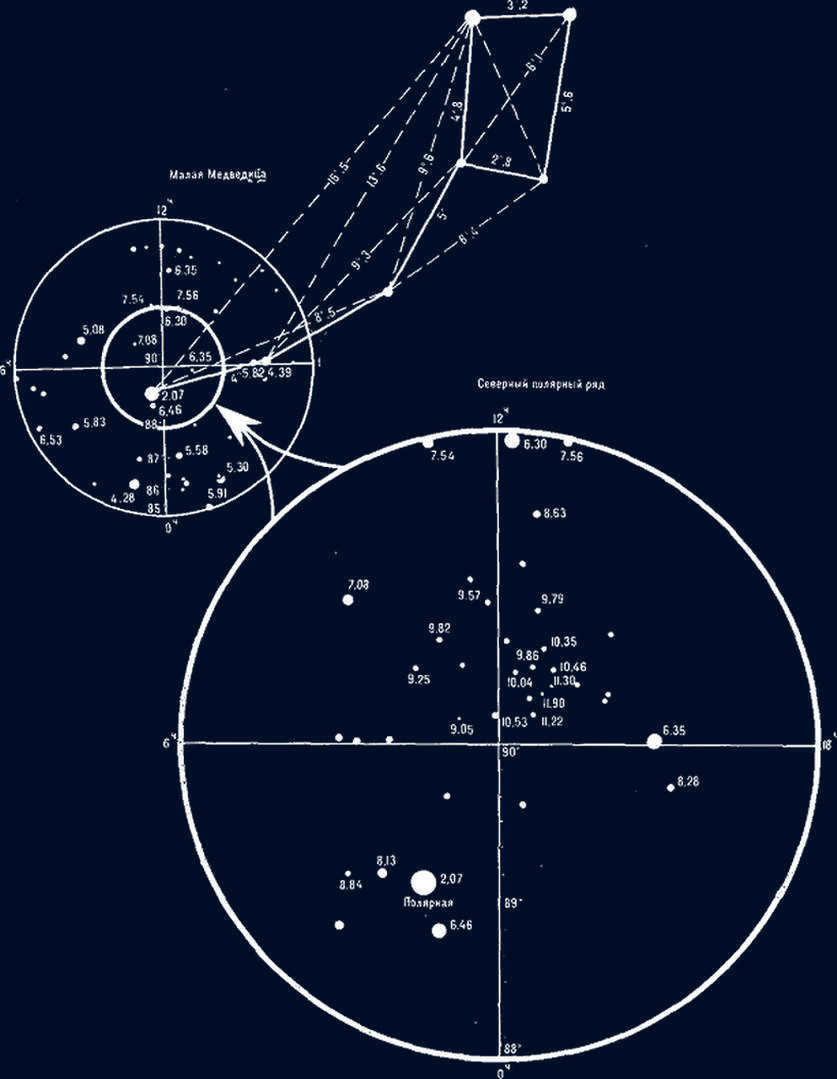
The outcome of the ongoing evolution of Polaris, which we are witnessing, remains unknown. The distance to Polaris is vast, estimated to be between 300 and 500 light years (the latest data suggests 447 light years and decreasing). The substantial variation is due to the inherent difficulty in accurately measuring the distance using the parallax method for such distant celestial bodies. Nevertheless, Polaris is significantly farther away than the stars in the Big Dipper’s handle, despite appearing equally bright to the naked eye. This implies that its true luminosity surpasses that of the handle stars.
Polaris belongs to the supergiant category. It possesses a white-yellow shade – somewhat similar to the Sun, yet surpassing the Sun in luminosity by one and a half thousand times and in mass by six times.
Stars of this nature do not have a long lifespan, and in a few million years, Polaris will undergo a supernova event. However, until then, it has the potential to serve as a guiding star for the inhabitants of planet Earth on multiple occasions.
As an added bonus at the conclusion of this article, there is a musical piece dedicated to the nymph Callisto, who was mentioned earlier in the article. It is worth noting that Callisto’s dog carries the crucial Polaris in its tail, which holds significant importance for us.

From time to time, our blog delves into subjects that may not be related to meteorology, but are still relevant to our daily lives. Today, we turn our attention to the heavens once again. Why, you may ask? Well, out of the 6,000 stars visible to the naked eye on a clear, unpolluted night, one star stands out: Polaris, also known as the North Star. Polaris is not the brightest, largest, or closest star to us, but it possesses a unique quality that sets it apart from the rest—it remains fixed in the sky while all the other stars move.
This exceptional characteristic has made Polaris a crucial point of reference for navigators in the northern hemisphere. By simply looking towards the north, one can always locate Polaris, providing a reliable guide for travelers. Let’s delve into the reasons behind Polaris’s unwavering position in the night sky.
The reason for this phenomenon is that this particular star is located precisely on the Earth’s axis of rotation, within the constellation of Ursa Minor. To put it simply, if we imagine space as a spinning disk on a turntable, Polaris would be positioned right at the center, remaining stationary while all the other stars revolve around it.
However, it is worth noting that this situation will not persist indefinitely. According to experts, the Earth’s axis of rotation undergoes a gradual shift of one degree each year. Consequently, in a few years’ time, we will no longer see Polaris in the sky at its current fixed position.
Locating Polaris: A Step-by-Step Guide

The polar star, also known as Polaris, can be easily located in the night sky from the northern hemisphere. It serves as a reliable navigational tool and is also useful for setting up astronomical telescopes. However, finding it may not be as simple as it seems.
To locate Polaris, one must first identify the constellation known as the Little Bear. This constellation can be found in the northern direction, so it is important to orient oneself accordingly. It is worth noting that the stars that form the Little Bear are quite faint, so it is essential to avoid areas with excessive light pollution in order to see them clearly.
To locate the Little Dipper, one useful tip is to first locate the Big Dipper, which can be found approximately halfway between the horizon and the center of the sky. The specific latitude may vary depending on your current location. Nonetheless, we have included images in this article to greatly assist you in this endeavor.

If you’re still unsure of the shape of the Little Bear, look for two stars that create the outline of the bowl: Ferkad and Kochab. Ferkad makes up the top part of the bowl, while Kochab makes up the bottom. These stars are easily visible without any special equipment.
Now, it’s just a matter of connecting the dots. You’ve already located the three brightest stars in the Little Dipper (Polaris, Ferhad, and Kochab), so all that’s left is to find the remaining stars that complete the bowl. You need to find the two stars that form the handle, as Polaris marks the end of it.
Locate Polaris with a compass
One alternative method for locating Polaris is through the use of a compass. This approach is more efficient, although it is important to note that magnetic north and Polaris do not align. Therefore, begin by orienting yourself towards north using the compass. Then, direct your gaze towards the night sky and identify the most luminous star, which will be none other than Polaris.
Will Polaris continue to serve as the North Star in the future?

How about the Southern Hemisphere?
From certain locations in the Southern Hemisphere, Polaris can also be observed. However, if assistance is needed, it is highly recommended to locate the Southern Cross. To do this, we will face south and direct our gaze towards the left, where four exceptionally luminous stars can be found. Then, simply connect the stars on the left and right, as well as the top and south.
The information presented in this article adheres to our guidelines for editorial integrity. To report any inaccuracies, please click here.

Undoubtedly, it is the most renowned celestial body among individuals. Furthermore, its fame began to soar in ancient times when the Sun was not acknowledged as a star. However, to be fair, its “stellar moment” arrived relatively recently in historical terms and was rather transitory.
There is a belief that it possesses extraordinary luminosity, but it is not the most radiant; rather, it is quite ordinary in this regard. Some individuals believe that it is the closest star, but this is also untrue. Another misconception is that Polaris can be seen from every corner of the Earth, and that it can be used as a navigation tool in all the world’s seas and deserts. However, this is also false. Only those acquainted with astronomy truly understand the significance of this celestial body.
What makes Polaris so renowned?
To begin with, it is its location on the celestial sphere, which is relatively close to the North Pole of the Earth – the point where the Earth’s imaginary axis intersects with the imaginary sphere. Polaris is approximately aligned with this point.

Doesn’t it seem like a lot of conceptual thinking that requires a great deal of imagination?
The concept is actually quite straightforward. If you extend the line connecting the Earth’s poles – the north and south poles – in the northern direction, this line will accurately point to Polaris.
Observing this celestial body from any location in the northern hemisphere of the Earth, we will always be able to determine the direction of the Earth’s axis of rotation.

Unfortunately, in the southern region of the planet, Polaris cannot be observed. This is true regardless of the season, whether it be winter or summer. The star remains hidden, never to be seen.
As a result, its practicality for maritime navigation is quite limited.
Nevertheless, it is precisely its navigational significance that has contributed to the star’s widespread popularity. After all, the origins of navigation can be traced back to the northern hemisphere.
For ship captains and navigators, locating this star in the night sky was a simple task. By using a plumb line suspended from Polaris, they were able to determine the northern point, and subsequently, all other directions at sea (east, south, west). In the vast expanse of the open ocean, where no other reference points exist, the stars served as their only guide.
However, as time passes, the stars alter their position in relation to the horizon – they ascend, descend – and during the evening, they occasionally traverse the entire expanse of the sky. It is impossible to navigate a ship according to a star that is constantly shifting its location, even if this apparent movement is merely a result of the Earth’s rotation.
And the point of north is always illuminated by Polaris alone

By utilizing special tables and adjustments for refraction, you can accurately calculate the latitude of your observation point by using Polaris. This method provides a much higher precision compared to determining the latitude to the nearest degree, allowing you to achieve accuracy within one or two angular minutes, equivalent to a distance of a few kilometers. This level of precision is sufficient for locating even the smallest desired island.
Unfortunately, Polaris does not offer any assistance in determining longitude. There are alternative methods available for this purpose. However, the focus of this article is not on marine navigation.
This is primarily a game and a matter of luck. For instance, there is no star of equivalent brightness in close proximity to the southernmost point of the globe. Navigation in the oceans and seas of the southern hemisphere posed a slightly greater challenge prior to the advent of GPS technology.
And even in the northern hemisphere, a few thousand years ago, sailors did not rely on Polaris for navigation. It did not even bear that name during that time.

Polaris Alpha, also known as the North Star, has acquired its name relatively recently. It was in the Renaissance period when the Dutch cartographer Gemma Frizus referred to it as “stella illa quae polaris dicitur” in one of his works. This name stuck to the star ever since. Interestingly, during that time, Polaris Alpha was four times farther away from the North Pole than its current position.
In earlier times, different civilizations had different names for Polaris Alpha. The Greeks called it “Kinosura,” which translates to “dog’s tail.” They didn’t associate it with a bear but instead believed it represented a dog, the same dog that followed its mistress, the nymph Callisto. Callisto was transformed into a bear by the jealous Hera but was later saved by Zeus and taken to the heavens.

The ancient Celts referred to it as the “Ship-Star” – “Scip-steorra” – a name they already knew would be fitting for this celestial body in the future.
Similarly, the ancient Arabs, who named almost all the visible stars in the sky, called Polaris “Al-Judei”, which simply translates to “Father”. Many Arabic star names are still used in astronomy today. However, the ancient name for Polaris has been replaced and mostly forgotten.
Regardless, in ancient times, when all these astronyms of Polaris were first used, this guiding star was not utilized for navigation, orientation, or other practical purposes. It was located far from the pole.


During the time of Archimedes and Pythagoras, another star known as “Kohab” (or “Kohab-el-shemali” in Arabic) served as the “polar star” instead of the current polar star. The name “Kohab” translates to “Star of the North”. Even in earlier times, during the construction of pyramids, the star “Tuban” – also known as the alpha of the Dragon – was the closest star to the North Pole of the World.
Undoubtedly, there was no Dragon present on the celestial maps during that period
As our knowledge has advanced, we now comprehend that the North Pole of our planet gradually shifts across the star chart, traversing from one star to another and completing a full revolution every 26 thousand years. Currently, it is approaching its nearest point to Polaris, which will occur in 2102, approximately 80 years from now. At that time, Polaris will be only 27 angular minutes away from the North Pole, slightly smaller than the size of the moon. However, at present, the distance is nearly a whole degree.
Over time, Polaris will no longer retain its status as the “North Star” and will yield its position to Cepheus gamma in two thousand years. Then, a further 10,000 years later, the dazzling star Vega, the alpha of the Lyra constellation, will take on the role of the “polar” star for inhabitants of the northern hemisphere of the Earth.
The Little Bear constellation is home to Polaris, which is not only the alpha but also the brightest star in this small group of stars. Interestingly, the beta star of the Little Bear, known as Kohab, is only slightly dimmer than Polaris, making it nearly indistinguishable to the naked eye.

Polaris has a similar brightness to the stars in the Big Dipper, which is often found alongside Polaris. If we extend the line between the outermost stars of the Big Dipper five times, we will come across Polaris, a relatively dim star with a magnitude of only 2.

While it may not catch the attention of the average person, the Polar Star has garnered interest from astronomers due to its distinctive characteristics and unparalleled attributes.

Polaris, also known as the North Star, is an interesting celestial object. When observed through an amateur telescope, it is possible, although challenging, to spot a faint companion star called Polaris B. However, a much closer component of the Polaris system, known as Polaris Ab, can only be observed using advanced telescopes like the Hubble or similar ones. Additionally, there are two other stars that float nearby in the same direction but at a certain distance from this trio. Astronomers are still uncertain about whether these stars are part of a stable system with Polaris or if they belong to an unstable scattered mini-cluster that will eventually disperse.

Astronomers have discovered several stars in the vicinity of Polaris that have a consistent level of brightness. These stars, known as the Northern Polar Series, act as a standard for measuring the luminosity of other stars. Since their position above the horizon remains constant, they can be used as a reference point for determining the amount of light absorbed by the atmosphere. This is especially useful when the sky is clear and transparent, as the absorption rate remains consistent.
In the past, Polaris itself was part of the Northern Polar Series and served as a prime example of a stable star.
It is now known that Polaris pulsates and changes its brightness according to the same pattern as most Cepheids, which are variable stars like Cepheus delta. However, Polaris possesses a unique characteristic that sets it apart as a cepheid. Firstly, the amplitude of the variation in Polaris’ light is extremely small – only one hundredth of a star magnitude – which is why it was considered stable in the absence of accurate photometers. Furthermore, over the course of its study, the amplitude of Polaris’ brightness change has decreased by a factor of four, while the overall brightness of the star has increased. In fact, over the past century, Polaris has become 0.2m brighter, which is not an insignificant change in the field of astronomy.

The outcome of the ongoing evolution of Polaris, which is unfolding before our very eyes, remains unknown.
The distance to Polaris is vast. According to various estimates, it ranges from 300 to 500 light years (the latest data suggests 447 light years, and this distance is decreasing). The wide range is due to the fact that measuring the distance accurately using the parallax method is not feasible for such distant celestial bodies. Nonetheless, Polaris is significantly farther away than the stars in the Big Dipper, despite appearing equally bright. This indicates that its true luminosity surpasses that of the stars in the dipper.

